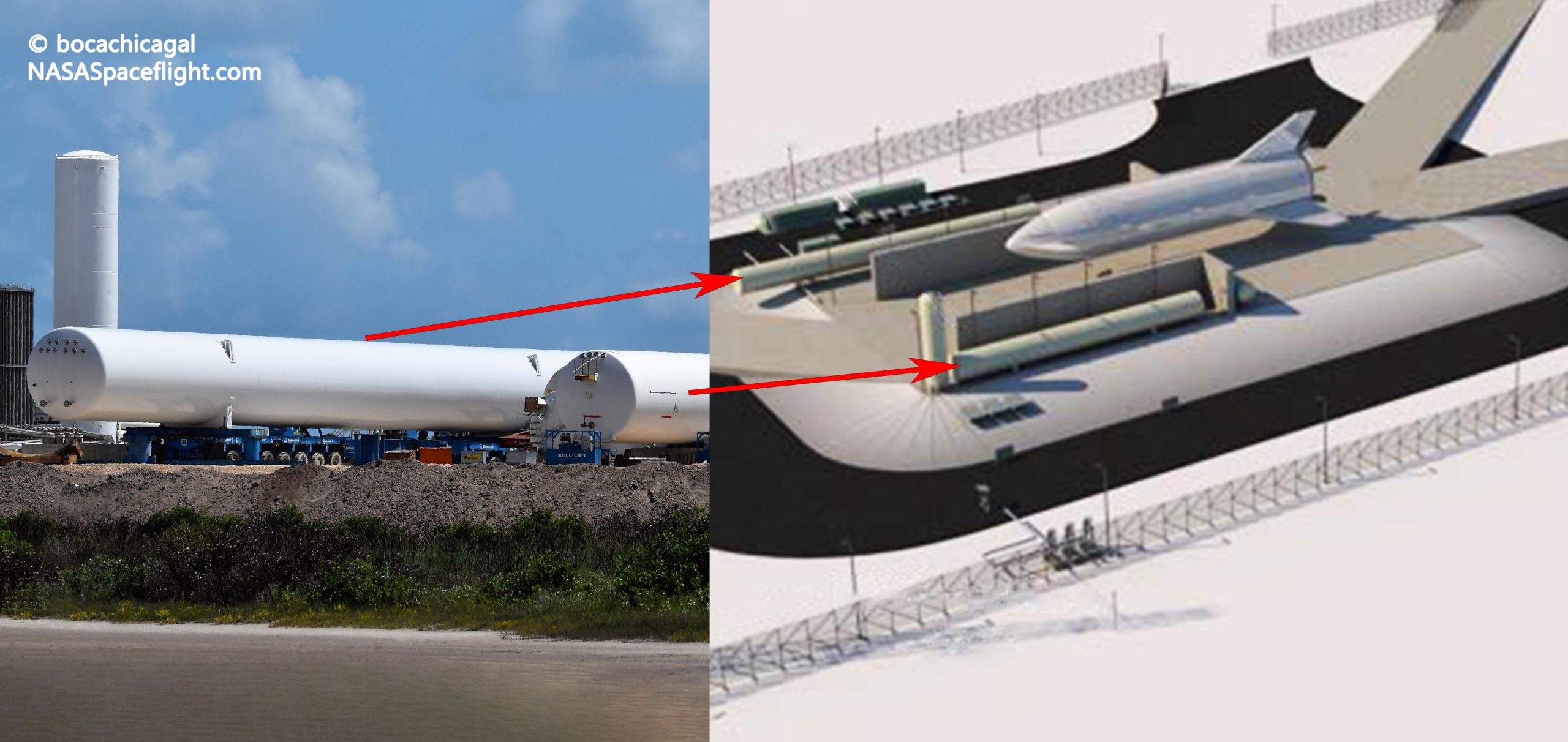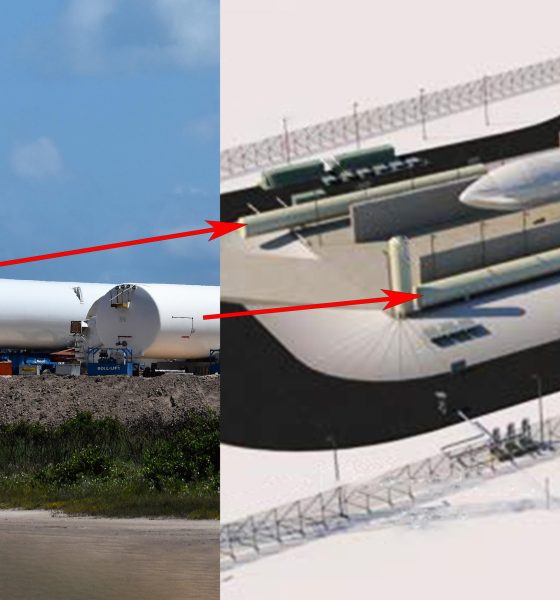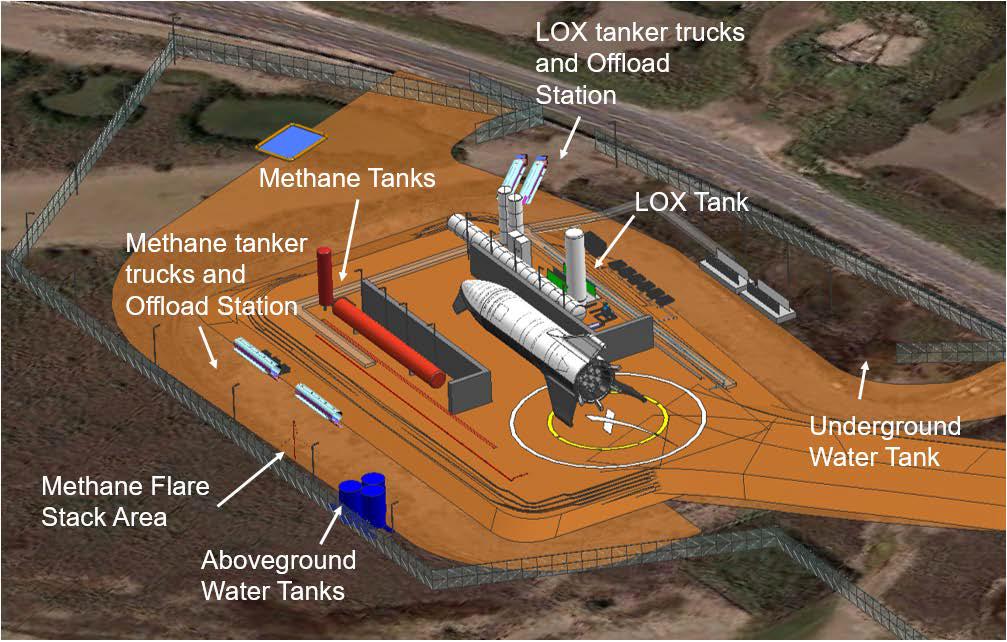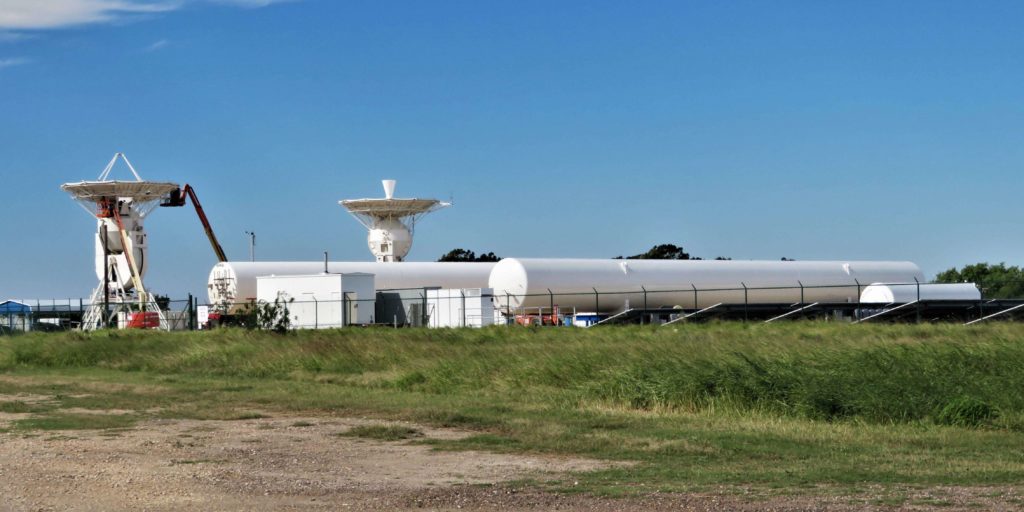

News
SpaceX begins launch pad upgrades for Starship flight tests in Texas and Florida
Beneath the buzz of Starship Mk1’s glamorous wing installation, SpaceX has begun installing new launch pad hardware meant to support the spacecraft’s first flights, several components of which have been in Boca Chica for more than a year.
Simultaneously, SpaceX broke ground on a complimentary Starship launch facility on September 21st, an add-on to the existing LC-39A pad in Cape Canaveral, Florida and the probable site of Starship’s first Super Heavy-supported orbital launch attempts.
SpaceX’s Starship-related progress at Pad 39A was noted and photographed by Julia Bergeron on September 21st during one of the hour-long bus tours offered by Kennedy Space Center’s Visitor Complex (KSCVC). SpaceX has been staging hardware at the proposed location of its Pad 39A Starship launch mount over the last ten or so days and finally broke ground (i.e. actually moved earth) on Saturday, a likely indicator that the company was waiting on an official go-ahead or construction permit.
The work at 39A could take anywhere from a few dozen weeks to 6-12 months depending on how substantial the changes are and how permanent SpaceX wants the facilities to be. For the time being, SpaceX applications show a fairly minimal series of modifications, including a concrete pad, a steel launch mount and water-cooled rocket exhaust diverter, a methane farm and associated plumbing, extensions of existing oxygen/nitrogen/helium ground systems, and a few stormwater management-related items.
At the same time, SpaceX is planning to transport its Starship Mk2 prototype – currently staged at a Cocoa, FL assembly facility – several dozen miles to Pad 39A as early as this month, although October is looking more likely. It appears that SpaceX has diverted a large portion of its Florida Starship workforce to Texas in an attempt to expedite Starship Mk1 integration, but SpaceX Cocoa has already fabricated nearly two-dozen steel rings and is likely far ahead of Boca Chica on the road to the first Super Heavy prototype. Barring calamity, Starship Mk1 is nevertheless all but guaranteed to beat Mk2 to flight.
Entering ‘Phase 2’
Back in Boca Chica, Texas, SpaceX ground engineers and technicians are working to upgrade the site’s existing launch facilities, previously used to support an extremely fast-paced campaign of Starhopper wet rehearsals, Raptor static fires, and hops. Starhopper completed its second and final flight on August 27th and the low-fidelity prototype will be retired either as a monument or a static Raptor test stand. Although the existing pad hardware was more than enough for Starhopper, Starship is much larger and has new needs that demand a few upgrades.

Along the lines of its proposed Phase 2 modifications, partially pictured above, SpaceX delivered two massive, new propellant tanks (one for methane, one for oxygen) on September 19th and September 22nd. Somewhat fittingly, those tanks marked the first major rocket-related SpaceX movement in Boca Chica after a long period of inactivity, and their deliveries in July and October 2018 rekindled the excitement surrounding the company’s South Texas launch site.


It remains to be seen whether SpaceX will revamp its current pad with a full concrete foundation and the nature of the Phase 2 pad’s launch mount and water deluge is also unclear. However, the upgrades do appear to be minimal and should take no more than a few weeks to a few months. SpaceX CEO Elon Musk wants Starship Mk1 ready for its first flight tests as early as October 2019 and the company has filed for FCC communications permits that indicate a no-earlier-than (NET) date of October 13th.
Check out Teslarati’s Marketplace! We offer Tesla accessories, including for the Tesla Cybertruck and Tesla Model 3.

News
Nvidia CEO Jensen Huang explains difference between Tesla FSD and Alpamayo
“Tesla’s FSD stack is completely world-class,” the Nvidia CEO said.

NVIDIA CEO Jensen Huang has offered high praise for Tesla’s Full Self-Driving (FSD) system during a Q&A at CES 2026, calling it “world-class” and “state-of-the-art” in design, training, and performance.
More importantly, he also shared some insights about the key differences between FSD and Nvidia’s recently announced Alpamayo system.
Jensen Huang’s praise for Tesla FSD
Nvidia made headlines at CES following its announcement of Alpamayo, which uses artificial intelligence to accelerate the development of autonomous driving solutions. Due to its focus on AI, many started speculating that Alpamayo would be a direct rival to FSD. This was somewhat addressed by Elon Musk, who predicted that “they will find that it’s easy to get to 99% and then super hard to solve the long tail of the distribution.”
During his Q&A, Nvidia CEO Jensen Huang was asked about the difference between FSD and Alpamayo. His response was extensive:
“Tesla’s FSD stack is completely world-class. They’ve been working on it for quite some time. It’s world-class not only in the number of miles it’s accumulated, but in the way it’s designed, the way they do training, data collection, curation, synthetic data generation, and all of their simulation technologies.
“Of course, the latest generation is end-to-end Full Self-Driving—meaning it’s one large model trained end to end. And so… Elon’s AD system is, in every way, 100% state-of-the-art. I’m really quite impressed by the technology. I have it, and I drive it in our house, and it works incredibly well,” the Nvidia CEO said.
Nvidia’s platform approach vs Tesla’s integration
Huang also stated that Nvidia’s Alpamayo system was built around a fundamentally different philosophy from Tesla’s. Rather than developing self-driving cars itself, Nvidia supplies the full autonomous technology stack for other companies to use.
“Nvidia doesn’t build self-driving cars. We build the full stack so others can,” Huang said, explaining that Nvidia provides separate systems for training, simulation, and in-vehicle computing, all supported by shared software.
He added that customers can adopt as much or as little of the platform as they need, noting that Nvidia works across the industry, including with Tesla on training systems and companies like Waymo, XPeng, and Nuro on vehicle computing.
“So our system is really quite pervasive because we’re a technology platform provider. That’s the primary difference. There’s no question in our mind that, of the billion cars on the road today, in another 10 years’ time, hundreds of millions of them will have great autonomous capability. This is likely one of the largest, fastest-growing technology industries over the next decade.”
He also emphasized Nvidia’s open approach, saying the company open-sources its models and helps partners train their own systems. “We’re not a self-driving car company. We’re enabling the autonomous industry,” Huang said.
Elon Musk
Elon Musk confirms xAI’s purchase of five 380 MW natural gas turbines
The deal, which was confirmed by Musk on X, highlights xAI’s effort to aggressively scale its operations.

xAI, Elon Musk’s artificial intelligence startup, has purchased five additional 380 MW natural gas turbines from South Korea’s Doosan Enerbility to power its growing supercomputer clusters.
The deal, which was confirmed by Musk on X, highlights xAI’s effort to aggressively scale its operations.
xAI’s turbine deal details
News of xAI’s new turbines was shared on social media platform X, with user @SemiAnalysis_ stating that the turbines were produced by South Korea’s Doosan Enerbility. As noted in an Asian Business Daily report, Doosan Enerbility announced last October that it signed a contract to supply two 380 MW gas turbines for a major U.S. tech company. Doosan later noted in December that it secured an order for three more 380 MW gas turbines.
As per the X user, the gas turbines would power an additional 600,000+ GB200 NVL72 equivalent size cluster. This should make xAI’s facilities among the largest in the world. In a reply, Elon Musk confirmed that xAI did purchase the turbines. “True,” Musk wrote in a post on X.
xAI’s ambitions
Recent reports have indicated that xAI closed an upsized $20 billion Series E funding round, exceeding the initial $15 billion target to fuel rapid infrastructure scaling and AI product development. The funding, as per the AI startup, “will accelerate our world-leading infrastructure buildout, enable the rapid development and deployment of transformative AI products.”
The company also teased the rollout of its upcoming frontier AI model. “Looking ahead, Grok 5 is currently in training, and we are focused on launching innovative new consumer and enterprise products that harness the power of Grok, Colossus, and 𝕏 to transform how we live, work, and play,” xAI wrote in a post on its website.
Elon Musk
Elon Musk’s xAI closes upsized $20B Series E funding round
xAI announced the investment round in a post on its official website.

xAI has closed an upsized $20 billion Series E funding round, exceeding the initial $15 billion target to fuel rapid infrastructure scaling and AI product development.
xAI announced the investment round in a post on its official website.
A $20 billion Series E round
As noted by the artificial intelligence startup in its post, the Series E funding round attracted a diverse group of investors, including Valor Equity Partners, Stepstone Group, Fidelity Management & Research Company, Qatar Investment Authority, MGX, and Baron Capital Group, among others.
Strategic partners NVIDIA and Cisco Investments also continued support for building the world’s largest GPU clusters.
As xAI stated, “This financing will accelerate our world-leading infrastructure buildout, enable the rapid development and deployment of transformative AI products reaching billions of users, and fuel groundbreaking research advancing xAI’s core mission: Understanding the Universe.”
xAI’s core mission
Th Series E funding builds on xAI’s previous rounds, powering Grok advancements and massive compute expansions like the Memphis supercluster. The upsized demand reflects growing recognition of xAI’s potential in frontier AI.
xAI also highlighted several of its breakthroughs in 2025, from the buildout of Colossus I and II, which ended with over 1 million H100 GPU equivalents, and the rollout of the Grok 4 Series, Grok Voice, and Grok Imagine, among others. The company also confirmed that work is already underway to train the flagship large language model’s next iteration, Grok 5.
“Looking ahead, Grok 5 is currently in training, and we are focused on launching innovative new consumer and enterprise products that harness the power of Grok, Colossus, and 𝕏 to transform how we live, work, and play,” xAI wrote.








